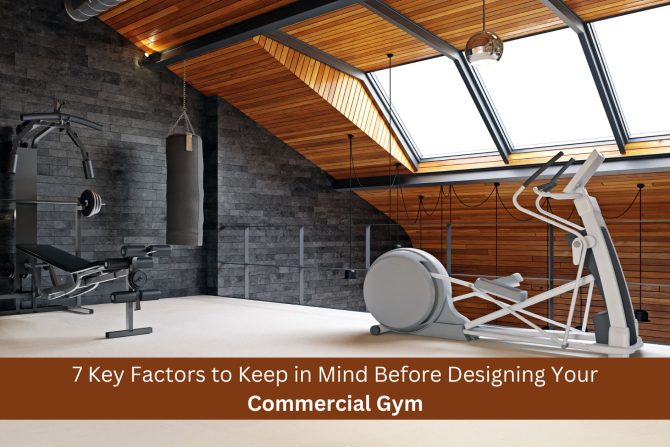
Commercial Gym Design: 7 Key Factors to Keep in Mind Before Designing Your Commercial Gym
Introduction
Designing a commercial gym is a significant undertaking that requires careful planning and attention to detail. A well-designed gym can attract and retain members, create a positive workout experience, and set your fitness facility apart from the competition. In this blog, Gymterior will guide you through seven key factors to consider before embarking on your commercial gym design journey. From layout and equipment selection to ambiance and safety measures, these insights will help you create a thriving fitness space that meets the needs of your clientele.
Factors to Consider Before Designing Commercial Gym
1. Define Your Target Audience
Understanding your target audience is the foundation of successful commercial gym design. Identify the demographics and fitness preferences of your potential members. Tailor your gym’s layout, equipment, and amenities to cater to their specific needs and goals. Whether it’s a high-intensity training facility or a wellness-focused gym, a well-defined target audience ensures you can create a space that resonates with your clientele.
2. Layout and Flow
An efficient layout is vital for a commercial gym. Optimize the flow of the space to prevent overcrowding and ensure smooth movement between workout areas. Divide the gym into distinct zones for cardio, strength training, functional fitness, and group classes. Strategically position equipment to create designated areas and facilitate easy navigation for members.
3. High-Quality Equipment Selection
Investing in high-quality gym equipment is essential to attract and retain members. Select equipment that aligns with your target audience’s fitness interests and goals. Include a variety of machines, free weights, cardio equipment, and functional training tools to offer a comprehensive workout experience. Regularly maintain and update equipment to ensure safety and performance.
4. Ambiance and Aesthetics
Creating an inviting ambiance is crucial for a positive gym experience. Use motivating colors, ample lighting, and inspirational decor to energize the space. Mirrors can enhance the sense of space and allow members to monitor their form during workouts. Consider integrating music systems to set the right tone and atmosphere.
5. Safety and Hygiene
Safety is of utmost importance in a commercial gym. Ensure proper spacing between equipment to avoid accidents and collisions. Install non-slip flooring and use rubber mats to minimize the risk of injuries. Maintain strict hygiene standards by providing hand sanitizing stations and encouraging members to wipe down equipment after use.
6. Ample Storage and Amenities
Offer ample storage solutions for members to keep their belongings during workouts. Locker rooms and showers are essential amenities that enhance the overall experience. Consider adding water stations and a snack bar to keep members hydrated and refueled after their workouts.
7. Accessibility and Inclusivity
Design your commercial gym to be accessible and inclusive to all members. Incorporate features like ramps, elevators, and wide entryways to accommodate individuals with disabilities. Offer a diverse range of equipment and classes to cater to different fitness levels and interests, ensuring that everyone feels welcome and supported.
Conclusion
Creating a successful commercial gym design involves a thoughtful approach to meet the needs of your target audience. From layout and equipment selection to ambiance and safety measures, each factor plays a crucial role in shaping a thriving fitness facility. Embrace these key considerations from Gymterior to create a commercial gym that attracts and retains members, fosters a positive workout environment, and stands out in the competitive fitness industry. Your well-designed commercial gym will inspire individuals to achieve their fitness goals and foster a community of health and wellness.
